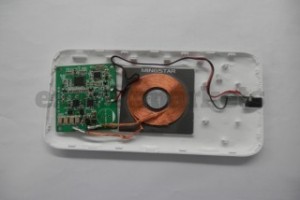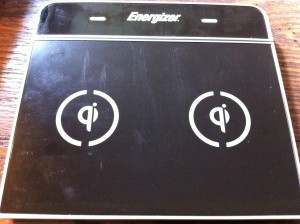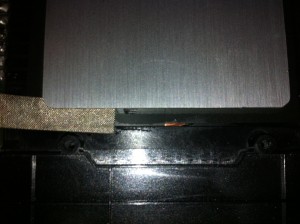There have been many bumps along the road to completing this project. What began as an investigation of wireless power transmission by using the market’s current wireless charger pads, became an investigation on the science behind how wireless charger work. The pad we originally ordered was out of stock, which pushed our schedule back. Then the charger that we ultimately received came without the inductive phone case, again this caused a change in our plans. We then decided to collect data on the magnetic field produced by the charger pad, and to our surprise there was no magnetic field. We researched why there was no magnetic field and we found that without the inductive case no field would be produced. What follows are the applications of this technology and an explanation of how it works.
What is wireless power transmission:
At the turn of the century Nikola Tesla suggested and demonstrated the idea of wireless power transmission. Today this technology can be seen in different facets of our lives, some examples are wireless phone charges and many electric toothbrushes. Today there are hopes to expand the uses of this technology, some major names in this field are the Wireless Power Consortium and WiTricity. The Wireless Power Consortium is attempting to universally standardize qi (chee) technology, which is the technology used for wireless power transmission. Though the industry is currently small there are hopes to make wireless power transmission as widespread as wi-fi is today, and eventually be used in our daily lives in ways such as household appliances. Currently the industry is limited by the wireless range which is on average 5 millimeters to 40 millimeters and it is used on devices that use up to 5 watts. WiTricity which was created by MIT is currently trying to increase the wireless range as well as the device wattage.
How does it work:
The way that wireless conductivity works is that there are two coils, one transmitter and one receiver. A current is run the the transmitter coil which creates a magnetic field. When the receiver coil is place within the magnetic field parallel to that transmitter coil then a charge is induced in the receiver coil, which can be used to power LED lights or charge phone batteries. It was because of the simplicity of the process that we believed that we could measure the magnetic field produced by the transmitter even without the receiver. The problem is that the devices on today’s market are not as simple. What we were missing was the receiver which turned out to be the most important part of today’s wireless charger. Within the charging receiver case there is a circuit board which is connected to the coil. The circuit board was two main components, a radio transmitter and the load which regulates the power supplied to the phone. The load uses the transmitter, which operates by sending unidirectional signals via back-scatter modulation to the transmitter pad. The load communicates how much power is needed, this allows the pad to turn its magnetic field on and off depending on whether the phone is fully charged or not. This is why we were unable to calculate the magnetic field because it was not receiving any signals to broadcast its magnetic field.
Bibliography:



